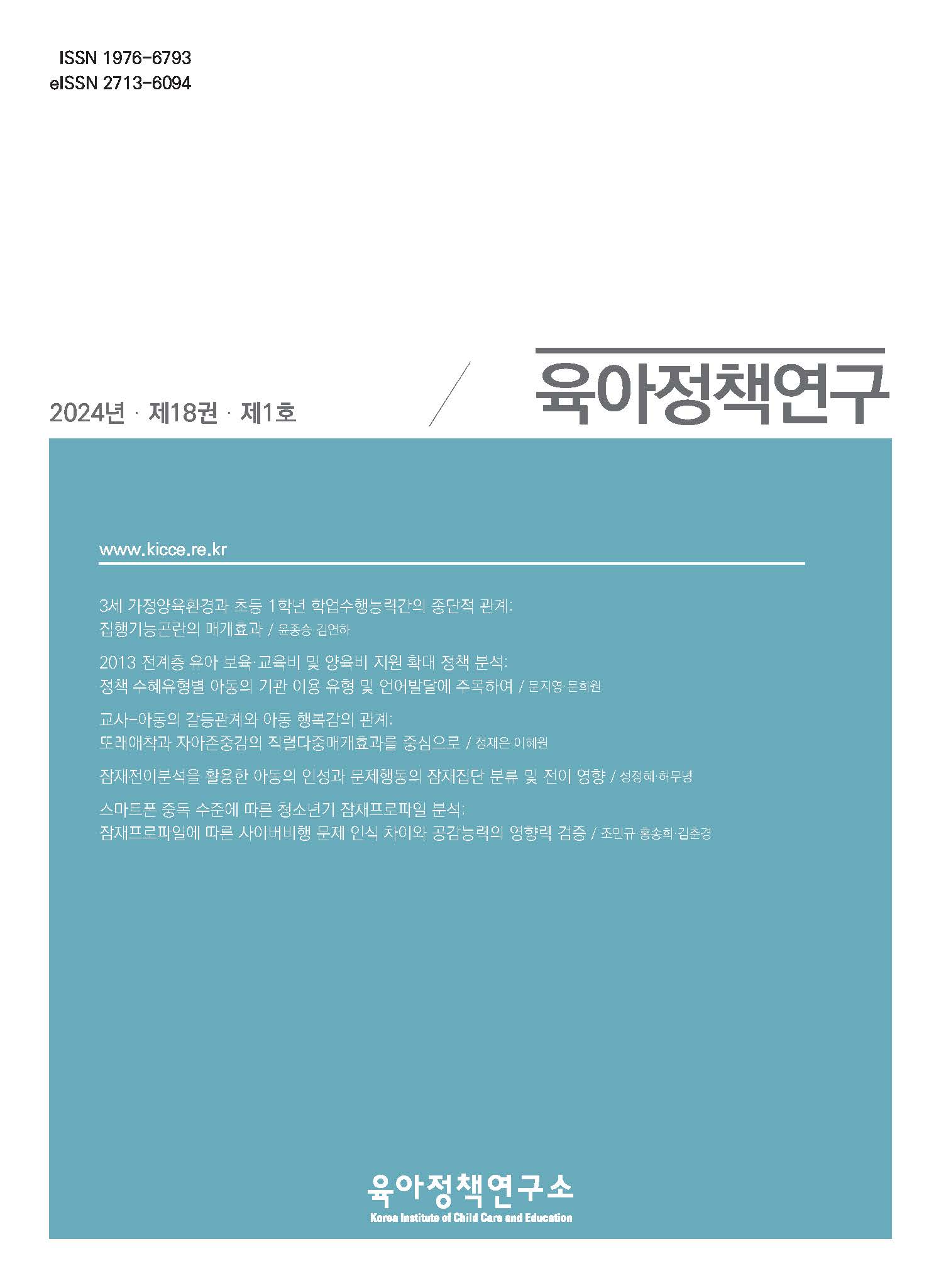- Publications
- Periodical
- KICCE Policy Brief
KICCE Policy Brief
Korean Journal of Child Care and Education Policy
[2024, 18-1] Analysis of the Latent Profile of Adolescents According to Smartphone Addiction: Verification of Differences in Cyber Delinquency Problem Awareness and the Influence of Empathy Ability According to Latent Profiles
- Chief Of ResearchMinkyu Cho
- ResearchersSonghee Hong and Choonkyung Kim
- PublishDate2024-06-30
- Pages87-110
CONTENT
Analysis of the Latent Profile of Adolescents According to Smartphone Addiction: Verification of Differences in Cyber Delinquency Problem Awareness and the Influence of Empathy Ability According to Latent Profiles
Minkyu Cho, Songhee Hong and Choonkyung Kim
The purpose of this study was to classify groups according to smartphone addiction in adolescence, determine the differences between perceptions of cyber delinquency problems awareness, and to verify the predictive power of empathy ability. To this end, 1,301 middle school students were surveyed in the 14th year of the Korean Children's Panel were selected, and a research analysis was conducted using Mplus 8.7 programs. The analysis results are as follows: first, the number of latent profiles according to smartphone addiction during adolescence was three. High-, medium-, and low-risk groups were determined. Second, the analysis of as a result of analyzing the characteristics of the cyber delinquency problem awareness group according to the latent profile revealed three latent profiles, designated as the high-risk/low-awareness-, the medium-risk/high-awareness-, and the low-risk/high-awareness-of-a-problem groups. Third, the empathy ability was found to predict group differentiation in awareness of smartphone addiction and cyber flight problems awareness. Among the sub-factors of empathic ability, cognitive empathy was found to predict group classification the most.
Keywords: Smartphone Addiction, Cyber delinquency problem awareness, Empathy ability, Latent profile analysis

